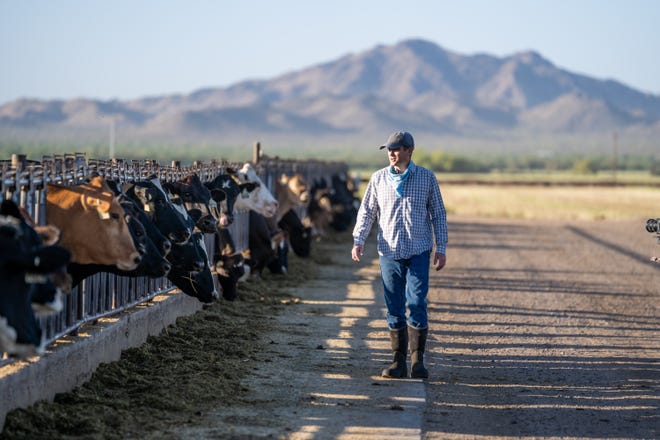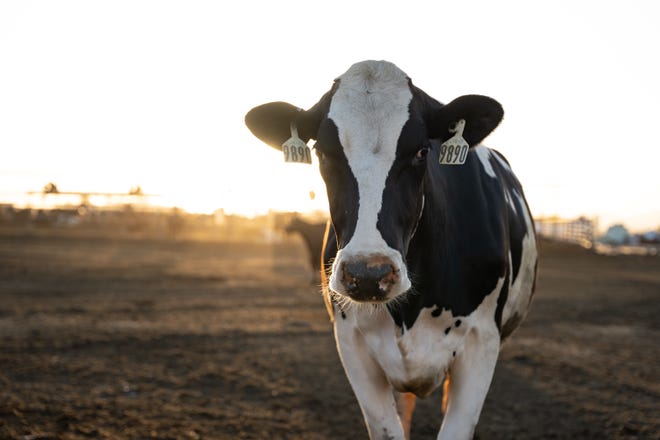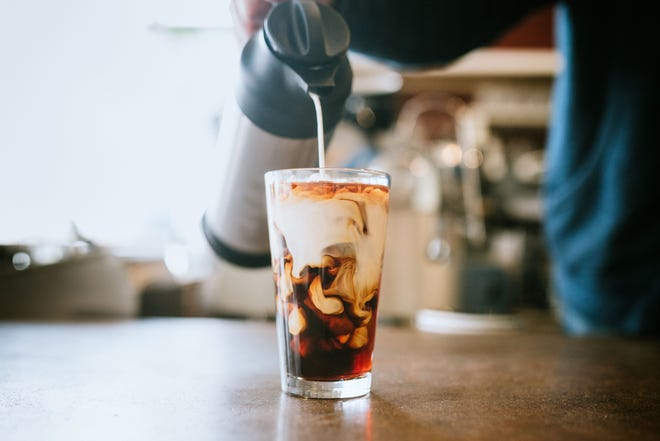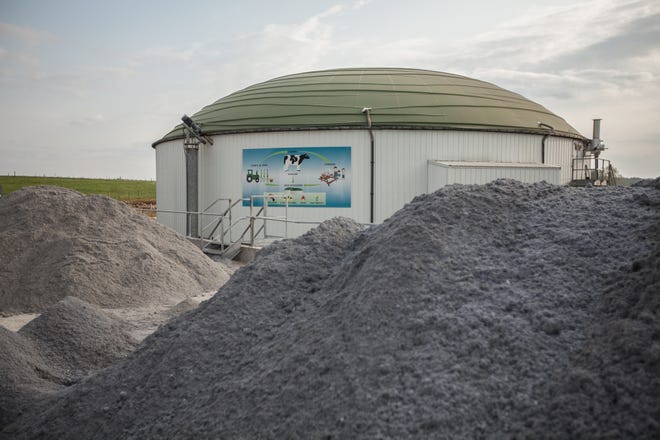Can dairy cows help fight climate change? The answer may surprise some
From upcycling to turning manure into biogas, dairy is helping build a sustainable future.

Hard-working farmers tend to the land and their herds every day to produce fresh, nutrient-dense dairy foods to fuel our bodies and support healthy immune systems.
Dairy farmers have made progress towards lowering emissions and conserving natural resources. As the climate crisis worsens and the world’s population grows, U.S. dairy has accelerated its efforts – setting ambitious environmental goals, initiating partnerships, funding research pilots and championing new practices and technologies.
Lori Captain, executive vice president of global sustainability, recently answered some questions including where the dairy industry is headed, what makes a cow’s stomach so incredible, and why some people are starting to “see dairy differently.”

1. To begin, for those who may be unaware of U.S. dairy’s sustainability efforts, what should they know about your work to-date?
In 2008, the U.S. dairy industry was the first in the food agricultural sector to conduct a full lifecycle assessment (LCA) at a national scale. That LCA, which focused on fluid milk, estimated that U.S. dairy accounts for approximately 2 percent of total greenhouse gas (GHG) emissions. In recent decades, thanks to innovative farming and feed production practices, the environmental impact of producing a gallon of milk in 2017 required 30 percent less water, 21 percent less land and a 19 percent smaller carbon footprint than it did in 2007.1 That’s equivalent to the amount of carbon dioxide removed from the atmosphere by half a million acres of U.S. forest.
Still, we know we can do more. In 2020, we set aggressive goals to collectively achieve GHG neutrality, optimize water use and improve water quality by 2050.
2. How exactly does a dairy cow emit GHGs?
Dairy cows emit methane in two ways, the first of which is directly from their mouths. Enteric methane is produced in the cow’s stomach through the digestion process and is released into the atmosphere through silent burps.
The second source is manure. Methane from manure can be generated under certain conditions, such as during storage, before it can be further used for fertilizing crops.
3. What are farmers doing to minimize the impact of cow burps?
Before I answer that question, it’s worth noting that we often call dairy cows “the original recyclers” because up to one-third of a dairy cow’s diet comes from byproducts. Think about the different types of waste generated from places like bakeries, breweries and other food manufacturers – almond hulls, cottonseeds, citrus pulp and peel and corn grain – these are all delicious additions to a dairy cow’s daily feed. So, in essence, dairy cows are taking foods we can’t eat, which would otherwise cause methane emissions in landfills, and converting them into something we can eat – milk and other dairy products.
The reason they’re capable of this is due to their stomach’s rumen ecosystem, putting the cow in a specialized class of mammals when it comes to digesting abilities. Yet amid the recycling benefits, the methane emitted by silently burping cows is one of the biggest, most complex sustainability issues for dairy, especially since it’s part of the animal’s natural digestive process.
To mitigate this, we’re doing research to identify and improve technologies like additives and genetic traits. In fact, a lot of progress has been made with feed additives, which can improve digestibility and by some estimations, could reduce methane emissions by as much as 30 percent in the coming years. We’re also encouraged by research into technologies like sensors, robots and artificial intelligence to monitor emissions.

4. If dairy’s sustainability challenge is so complex, should people just stop eating and drinking dairy products altogether?
A recent modeling study explored this exact question – what would happen if we did away with dairy farms and dairy cows altogether? It turns out, what amounts to minimal environmental gain would come at significant expense to human health and nutrition.
For example, the study showed reallocating land currently used for dairy cow feed to grow fruits and vegetables resulted in a 9.9 percent increase in GHG emissions and reduced supply of calcium, vitamins D and B12, riboflavin and alpha-linolenic acid.
Dairy foods are arguably one of the most affordable and accessible sources of high-quality protein and other essential nutrients. Americans get more than half their calcium and vitamin D from milk, cheese and yogurt2, and research shows it’s not easy to obtain those essential nutrients from other food sources unless you eat more, increasing calorie intake and the amount of money you’ll spend.
5. Is it true that dairy farms can turn manure into renewable energy?
It’s true, cow manure can be turned into useful energy – we call it cow power! Micro-organisms break down organic materials like cow manure or food waste and capture energy in a process called anerobic digestion. It happens in a digester – a closed tank where there’s no oxygen. There, bacteria break down the cow manure and food waste, creating biogas, which can then be used for electricity, heat, compressed natural gas and even vehicle fuel.

6. Can biogas really help power vehicles?
Yes, in fact, on Bar 20 Dairy in Kerman, California, a digester captures methane from their 7,000-cow herd and converts it into renewable electricity via fuel cells. Through a partnership with BMW North America, the combustion-free, dairy-derived electricity is transmitted via the utility grid to power electric vehicles. The methane emission reductions at the farm, combined with the renewable energy generation, result in emissions reductions equivalent to providing clean power to more than 17,000 electric vehicles per year.
7. How does U.S. dairy collaborate with others on its environmental priorities?
Partnerships help fuel our environmental progress – no one industry, sector or company can tackle the climate challenge alone.
In one example, major customers like Nestlé and Starbucks are partnering with dairy farms to demonstrate feasibility and long-term viability of technologies and practices for U.S. dairy farms of all sizes and geographies that can significantly reduce GHG emissions and improve water use and quality while increasing and diversifying farmer revenue.
We know there’s not a single, perfect solution, but what we do know is dairy foods are an important part of a healthy, sustainable future. That’s why our industry is so determined to continue producing dairy foods responsibly while nourishing and supporting vibrant communities for generations to come.
Learn more about the Innovation Center for U.S. Dairy and how the dairy community is making strides toward a sustainable future.
References
No comments: